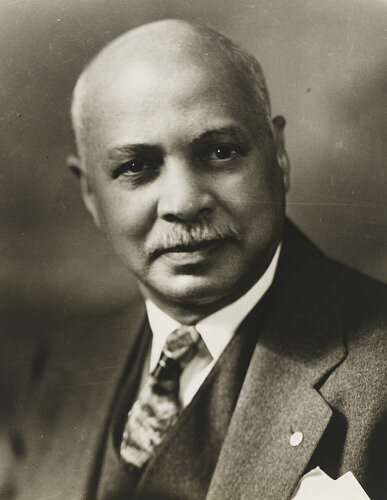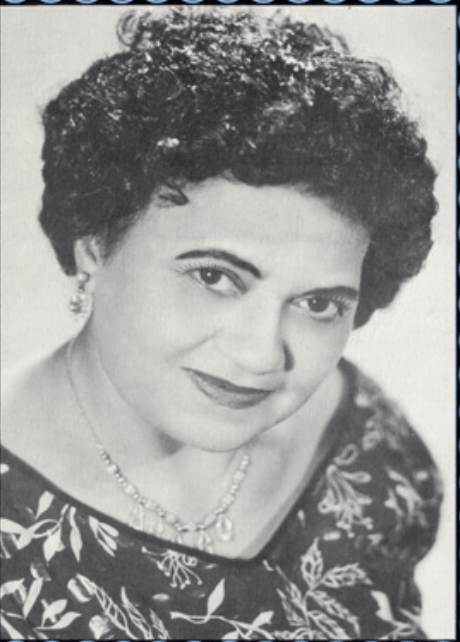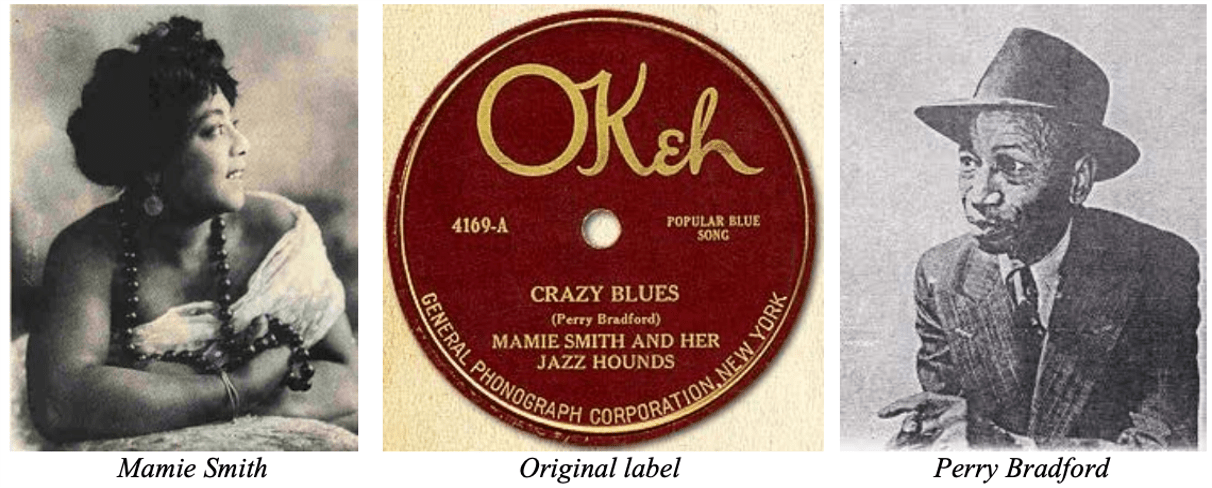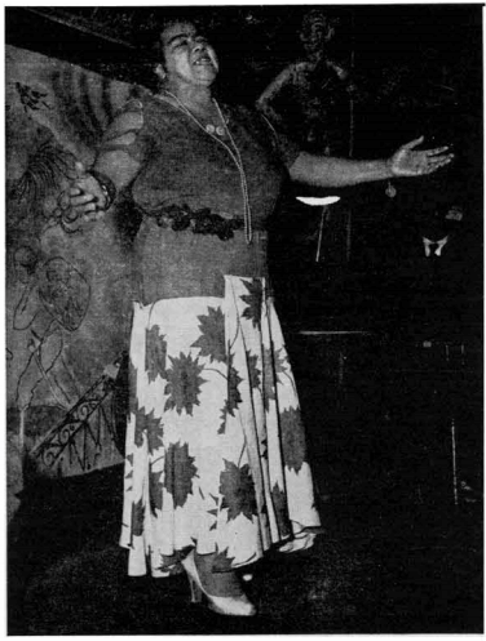Listen What I Gotta Say: Women in the Blues
Lesson 4
Standardizing the Blues
6th grade–8th grade

How did some of the structural elements we associate with blues music become the standardized over time?
Rhythmic Blues, by Joseph Holston. Smithsonian American Art Museum.

Standardizing the Blues
20+ MIN
Portrait of W. C. Handy, by Prentice H. Polk. National Portrait Gallery, © Tuskegee University Archives.

The World Meets the Blues
Component 1

20+ minutes
The World Meets the Blues

The musical style we now know as the “blues” was created by African Americans in the rural southern United States toward the end of the 19th century.
If time allows, watch this short video, which offers more details about the origins of the blues:
The Legendary Spot Where Elvis Recorded His First Song, by Smithsonian Channel.
What Makes the Blues?

While “blues style” developed over time and had a variety of influences, the standardized blues elements we recognize today (form, harmony, scales) were not solidified until composer, W.C. Handy, wrote and published the instrumental version of “Memphis Blues” in 1912.
"Memphis Blues", recorded by James P. Johnson

"Memphis Blues"
Let's listen to a vocal version of "Memphis Blues".
- Keep in mind that this was the first music publication labeled as the "blues".


What musical sounds do you notice?

Katherine Handy Lewis, by David Gahr. Folkways Records.
"Memphis Blues" Lyrics

Folks I've just been down, down to Memphis town.
That's where the people smile, smile on you all the while.
Hospitality, they were good to me.
I couldn't spend a dime, and had the grandest time.
I went out a dancing with a Tennessee dear. They had a fellow there named Handy with a band you should hear.
And while the *[white] folks swayed, all the band folks played real harmony.
I never will forget the tune that Handy called the Memphis Blues. Oh yes, them Blues.
They've got a fiddler there that always slickens his hair. And folks he sure do pull some bow.
And when the big Bassoon seconds to the Trombones croon. It moans just like a sinner on Revival Day, on Revival Day.
That melancholy strain, that ever haunting refrain
Is like a *[darkie] sorrow song.
Here comes the very part that wraps a spell around my heart.
It sets me wild to hear that loving tune a gain, the Memphis Blues.
W. C. Handy - Father of the Blues

W.C. Handy (1873-1958) (pictured here) was a classically trained musician, composer, and music educator.
Handy commonly pulled from African American folk music styles as inspiration for his compositions.
"Memphis Blues" was key in popularizing the blues to a broad audience because it codified distinct elements for the genre that people could recognize.

Portrait of W. C. Handy, by Prentice H. Polk. National Portrait Gallery, © Tuskegee University Archives.
Recording the Blues

This song, “Crazy Blues”, was written by another classically trained African American musician—Perry Bradford.
Crazy Blues Single and Artists' Portraits, by Ed Komara. Library of Congress.

Although W.C. Handy's 1912 composition was crucial in making the blues a music genre, Mamie Smith was the first African American to make a public recording of a blues song (1920).
Does it Sell?
It was not until Mamie Smith recorded "Crazy Blues" that the “blues,” as a genre, was viewed as marketable.
Reflect and Discuss: What are some factors that make music "marketable"?


Does it Sell?

Why do you think "Crazy Blues" was the first blues recording that was considered marketable?
Considering the time period, why do you think some assumed that "the blues" was not worth recording and selling?
"Memphis Blues", recorded by Katherine Handy Lewis
"Crazy Blues", recorded by Mamie Smith
The Blues Experiences Commercial Success

“Crazy Blues” was a huge hit, reportedly selling over 75,000 in its first few months of release.
This recording launched the commercial popularity of the blues genre.
The success of this record showed record labels that African Americans were consumers with buying power.

Okeh Race Records Form No. 2566, by the Okeh Phonograph Corporation. Library of Congress.
Discussion

How do you think compositions like “Memphis Blues” and “Crazy Blues” affected what consumers thought of as the “blues?”
Why would having a standardized form for the blues be important commercially?
Comparison

Some examples of other blues musicians: B.B. King; Eric Clapton; Memphis Minnie; Big Mama Thornton; Muddy Waters; Robert Johnson; Bessie Smith; Ma Rainey.
How do “Memphis Blues” and “Crazy Blues” compare to other blues songs and musicians you know?
"Memphis Blues", recorded by Katherine Handy Lewis

"Crazy Blues", recorded by Mamie Smith
B. B. King, Newport, 1968, by Dick Waterman. Smithsonian Magazine.
Learning Checkpoint
- What was the first commercial recording of the blues and who recorded it?

- Who is known as the "Father of the Blues" and why?
- Why did the blues begin to be viewed as marketable in the 1920s?

End of Component 1: Where will you go next?



12-Bar Blues Phrasing and the Blues Scale
Component 2

30+ minutes
| I | I or IV | I | I7 |
|---|---|---|---|
| IV | IV | I | I7 |
| V | V or IV | I | I or V |
Standardizing the Blues

The first published "blues" composition —"Memphis Blues" by W.C. Handy (1912) —provided the structure for not only blues music, but many other types of American music that became popular during the 20th century.
"Memphis Blues", recorded by James P. Johnson

Generally Speaking .....
Connections

Can you think of any connections between what you know as the “blues” and other musical styles? (Hint: Think about some of today’s popular music)
Listening for Structure and Phrasing

Let's listen to the vocal version of "Memphis Blues", performed by Katherine Handy Lewis (the composer's daughter):
Are there any sections that repeat or change drastically?
How long are the phrases?
Can you determine the meter by tapping along?
Chord Progression: The 12-Bar Blues
A common chord progression is one feature of blues music that has become standardized over time.

| I | I or IV | I | I7 |
|---|---|---|---|
| IV | IV | I | I7 |
| V | V or IV | I | I or V |
Standard 12-bar blues chords
Fun with Chord Changes

| I | I or IV | I | I7 |
|---|---|---|---|
| IV | IV | I | I7 |
| V | V or IV | I | I or V |
Standard 12-bar blues chords
- Each time you hear a new chord (the chord change), clap your hands.
- Try to sing the chord changes (sing the root note at the beginning of each measure).
- Play the chord changes (root note) on an instrument.
Your teacher will play the 12-bar blues progression.
"Memphis Blues"

| I | I or IV | I | I7 |
|---|---|---|---|
| IV | IV | I | I7 |
| V | V or IV | I | I or V |
Standard 12-bar blues chords
Let's return to the vocal version of the first published blues composition, "Memphis Blues", performed by Katherine Handy Lewis (the composer's daughter).
In the final section of the song, does it sound like the 12-bar blues?
"Memphis Blues"

As you listen to this excerpt again, follow along with the lyrics and identify the three phrases.
That melancholy strain, that ever-haunting refrain is like a *[darkie] sorrow song. (4 bars)
Here comes the very part that wraps a spell around my heart. (4 bars)
It sets me wild to hear that loving tune again, the Memphis Blues. (4 bars)
"Crazy Blues"

| I | I or IV | I | I7 |
|---|---|---|---|
| IV | IV | I | I7 |
| V | V or IV | I | I or V |
Standard 12-bar blues chords
Now let's listen to an excerpt from the first commercialized blues recording, "Crazy Blues," performed by Mamie Smith.
During this part of the song, does it sound like the 12-bar blues?
Moving with the Changes
- As a class, choose two movements.
- Assign each movement to a chord: One for the "home" chord (I) and one for the "away" chords (IV, V).
- Listen to the excerpts from the songs and perform the movements accordingly.

"Crazy Blues"
- Mamie Smith
"Memphis Blues"
- Bessie Smith
Optional: Research Time!
Even today, many popular musicians still use the 12-bar blues framework when they write songs.
Do a little research on your own on the songs/musicians you like to listen to. Do any of them use the 12-bar blues?
Make a list of famous/popular tunes that use this form.

What is a "Blue" note?

Blue notes are created by raising or flattening the pitch to cause an unexpected, dissonant sound.
Raise your hand when you hear blue notes.
"Memphis Blues", recorded by Katherine Handy Lewis
"Crazy Blues", recorded by Mamie Smith
Blues Scales

There are scales—called blues scales—that are structured using blue notes.
“Do, Re, Mi, Fa ...
So, La, Ti, Do”
Remember: A scale is a sequence of notes.
You are probably most familiar with the diatonic major scale:
- Do, Re, Mi, Fa, Sol, La, Ti, Do
- 1, 2, 3, 4, 5, 6, 7, 1
- C Major: C, D, E, F, G, A, B, C
Generally Speaking .....
Blues Scales

How do blues scales differ from diatonic scales?
-
Usually have six pitches
-
Usually feature the lowered 3rd, 5th, and 7th scale degrees (blue notes)
-
Most common configuration:
1 - b3 - b5 - 5 - b7
Blues Scales
Standardizing the Blues

Two important features in blues music that were standardized through W.C. Handy's "Memphis Blues" (1912) were:
"Memphis Blues", recorded by James P. Johnson

- 12 bar phrasing (3 four bar phrases)
- Blue notes / blues scale (1 - b3 - b5 - 5 - b7)
Generally Speaking .....
Optional: Discussion

Based upon your pre-existing knowledge of the blues, are there any common musical elements missing in the recordings we listened to in this component?
Learning Checkpoint
- What is 12-bar phrasing?
- What is a blue note?
- What is a blues scale?


End of Component 2: Where will you go next?

Interpreting the Blues
Component 3
20+ minutes


Lizzie Miles, unknown photographer. Cook Records.
Interpreting the Blues
Over the years, many artists have interpreted the first published "blues" composition, W. C. Handy's "Memphis Blues".
As a class, discuss some differences between these two versions.

"Memphis Blues", recorded by Katherine Handy Lewis
"Memphis Blues", recorded by Lizzie Miles
Personal Preferences
Listen to both versions again.



Make a list of a few things you like about each performer's version of "Memphis Blues" and a few things you'd change.
Katherine Handy Lewis, by David Gahr. Folkways Records.

Lizzie Miles, unknown photographer. Cook Records.
Learn the Melody

Listen to a 12-bar phrase from these excerpts several more times.
As you start to feel comfortable with the melody, can you hum along?
Sing Along

Now that you are comfortable with the melodies, try to sing along.
Can you emulate the vocal style of the singer? Can you add your own style?
Katherine Handy Lewis
Lizzie Miles
It sets me wild to hear that loving tune again, the Memphis Blues.
That melancholy strain, that ever-haunting refrain is (just) like a *[darkie] sorrow song.
Here comes the very part that wraps a spell around my heart.
That melancholy strain, that haunting refrain, is just like a sorrow song.
And, here comes the part that wraps itself around your heart, blow boy blow.
Say he drives me wild, when I hear that loving strain, those old Memphis Blues.
Optional: Arrange "Memphis Blues"
Now that you are familiar with a 12-bar phrase from this song, can you create your own arrangement?

Add your own style
Practice singing the melody
Add time / rhythm
Learn the chord progression
Arranging "Memphis Blues"

| I | I | I | I7 |
|---|---|---|---|
| IV | IV | I | I or I7 |
| V | IV | I | I or V7 |
12-bar blues chord progression
That melancholy strain, that ever-haunting refrain, is just like a sorrow song.
Here comes the very part that wraps a spell around my heart.
It sets me wild to hear that loving tune again, the Memphis Blues.
Learning Checkpoint
- What were some differences between two interpretations of "Memphis Blues" (Katherine Handy Lewis vs. Lizzie Miles)?
- What important elements of "Memphis Blues" (heard in both versions) have remained somewhat standardized over time?



End of Lesson 4: Where will you go next?

Lesson 4 Media Credits

Audio courtesy of
Smithsonian Folkways Recordings
Images courtesy of
Library of Congress
Danielle Nalangan
National Portrait Gallery
Smithsonian American Art Museum
Smithsonian Folkways Recordings
Tuskegee University Archives
© 2023 Smithsonian Institution. Personal, educational, and non-commercial uses allowed; commercial rights reserved. See Smithsonian terms of use for more information.
This Lesson was funded in part by the Smithsonian Youth Access Grants Program, with support from the Society for Ethnomusicology and the National Association for Music Education.
For full bibliography and media credits, see Lesson 4 landing page.






